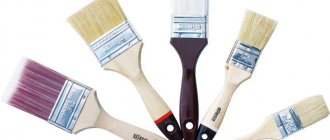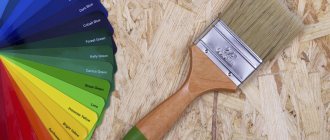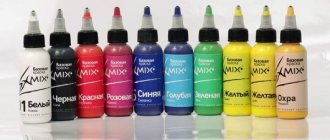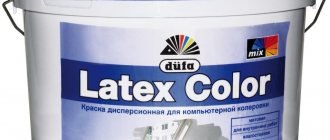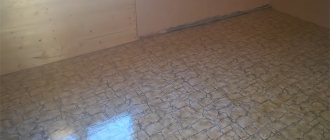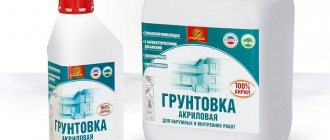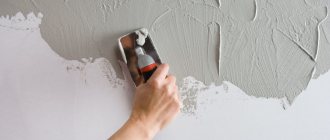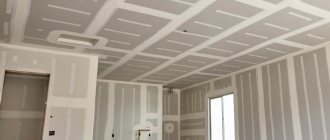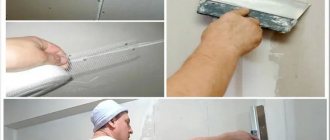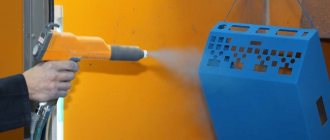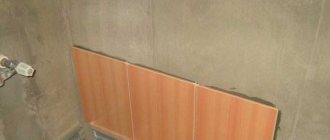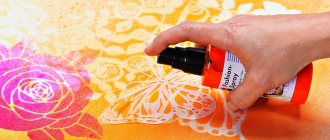Form.
There are a lot of different brushes for painting. All of them are designed to work with different materials and for different types of work. The most popular round brush, depending on the size, the brush can serve as a filler or as a tool for miniature work thanks to its thin tip. Flat brushes are convenient for working on a large surface and applying the background. Oval brushes usually play the role of a flat brush, but when used correctly they can change the width of the stroke. Flat brushes with short bristles are called contour brushes: they are convenient for detailed work. With flat fan brushes it is very convenient to shade or create textured moments on the canvas. Linear brushes (liners) have thin, elongated hair; due to the length of the bristles, the brush can absorb quite a lot of paint and allows you to draw long lines without additional addition. A flat cat tongue brush helps blur the edges of objects.
How to choose quality brushes
In an effort to choose the right brushes for painting, you need to know what they are, what the brushes are made of and what paints they are intended for. So, for example, to paint with gouache or watercolor, they use squirrel, kolinsky and synthetics. They all have their own quality characteristics:
- The column is suitable for all styles of painting, but its price is quite high.
- Squirrel is ideal for watercolors, and synthetics are ideal for acrylic painting.
- The pony brush is a good alternative to the kolinsky and squirrel brushes.
- A brush made from pig wool is more suitable for oil paints.
- A badger brush is used for soft paints.
- Sable in its quality has the properties of kolinsky and squirrels, but such bristles can be used to paint large works and miniatures.
- Synthetic brushes are not suitable for watercolors; they are more often used for acrylics.
Any brush is made of a handle, a hair tuft and a base. The quality of this drawing tool determines whether it will be convenient for the artist to work. In turn, its durability in use depends on the quality of all components of the brush.
To choose the right brush sizes and the tool itself, you need to focus on the following points:
- the material from which the brush is made – a good quality brush is convenient to use;
- the brush handle should be smooth;
- its length should be convenient for the user.
The base of the brush should encircle the handle as tightly as possible, fixing the hair bun motionless. There should be no seam on it so that the instrument is comfortable to hold in your hand. The most important part of the product is the hair bun, which differs in material. A synthetic paint brush is of worse quality than natural brushes. Such drawing tools are classified by numbers.
Artists know how to choose brushes and what types of brushes are available. The correct choice is also influenced by the size of the brush, as well as what paints the art specialist plans to paint with. One person needs thin brushes, the other needs a round one.
A brush with good hair has the following qualities:
- her hairs are elastic;
- when wet they do not lose their shape;
- do not fall out during operation;
- the glue with which they are fastened does not extend beyond the holder.
You need to pay attention to all these characteristic signs in order to choose a good brush.
In the video: how to choose the right brushes for painting.
synthetics
Synthetic brushes are an analogue of natural brushes; they are made from nylon and other fibers. Despite the fact that the brushes are not natural, they are not inferior in elasticity to kolinsky brushes. But synthetic hair is hard and, unlike natural hair, absorbs liquid very well, so it is not suitable for watercolor painting. And for acrylic - the most ideal option. These brushes are convenient for drawing straight lines and shading paint on the canvas. They are also used for applying oil sketches to canvas.
Types of brushes and their purpose
To choose the right brush, focus on the bristles from which the bun is assembled. You also need to know which brushes are best to use for watercolors, gouache or oil paints:
- Squirrel wool brushes. Ideal for painting with watercolors. Thin and soft brushes allow you to control the flow of paint, so they are convenient for painting small details of a picture. To ensure a high-quality brush made from squirrel hairs, the bristles are first degreased, sorted by length, unusable hairs are removed and straightened.
- Goat hair brushes. Designed for watercolor paint, the artist can not only use them comfortably, but also save on price. To choose a brush for painting for children, pay attention to their painting skills.
- Sable wool brush. It is the most expensive tool used by professional artists. The choice of such brushes makes it possible to draw thin lines; they can be used to paint with gouache and watercolor.
- Pony hair tassels. Quite elastic and soft, suitable for drawing with ink. However, for those who are going to paint with gouache, this is also a worthy option. With the help of such bristles it is easy to apply strokes of paint.
- Nylon tassels. Recommended for acrylic paint, they come in different shapes, it all depends on the specifics of the artist’s work. A sales assistant at an art supply store will help a beginner make the right choice.
Natural brushes are characterized by the fact that the tuft in them is made of animal hair. Made from natural material, which is much higher quality than synthetics, these brushes will last much longer.
Bristle.
The bristles of the brushes are made from pig ear hair. The elastic bristles are subjected to special treatment and bleached; only then is it suitable for the manufacture of professional art brushes. Brushes come in flat and round shapes and are great for working with acrylic and oil paints, as well as gouache using dry techniques. These brushes are quite convenient for drawing detail, as well as covering large surfaces with varnish. The bristles have an ivory color and the ability to hold paint well. (glaze)
Suitable brushes for oil work
For artists who paint with oil paints, it is recommended to purchase the following brushes:
- bristles, which are particularly elastic and quickly absorb paint;
- medium soft mongoose brushes;
- badger hair brushes that are suitable for mixing oil and acrylic;
- a synthetic nylon brush, which is almost as good in quality as natural ones.
Synthetics are inexpensive, so they use these brushes to paint on landscape paper at school. Thanks to the light nylon hairs, children can clearly see the shade of paint on the bristles. A thin brush is convenient for marking contours and boundaries between colors, while a thick brush is useful for painting large areas of the design.
Pay attention to the shape of your paint brushes
As you may have noticed, the outlines of the pile are radically different. Good artists have several options. Their purpose is different:
- The round shape is intended for spot application. This option is suitable for those who ask what good brushes are needed for painting with gouache;
- flat (in the form of a tongue) is used for painting large objects in the picture;
- linear is used for drawing boundaries and drawing thin lines;
- fan pattern is popular among professional artists for a smoother color transition.
Goat hair
Goat hair is one of the most common materials for making art brushes. This is due to the universal properties of this material. Brushes made from goat hair are of medium hardness: moderately soft and elastic. Also, the advantages of such bristles include the durability of the brushes, the absence of hard marks on the surface of the drawing when working, and the ability to withstand high temperatures. The latter feature makes it possible to use goat hair brushes for painting on fabric. Among other advantages of goat hair brushes, it is worth noting their affordable cost: most brushes offered in stores and supermarkets are made from this type of bristle.
Most often, goat hair brushes are used for the following purposes:
- For painting with watercolors and gouache. Goat hair holds paint perfectly and gives “juicy” and at the same time clear strokes.
- When working with glue, if you need to perform the finest, neat work, for example, appliqué.
- For calligraphic writings.
Goat hair brushes are ideal for children and beginning artists. They are available in a variety of shapes and sizes and allow you to inexpensively choose a complete set of brushes to get the job done.
Squirrel hair
Squirrel hair brushes are among the best choices for working with water-soluble paints. After all, squirrel hair perfectly absorbs moisture and retains it. Using a squirrel hair brush, the artist can apply the most elegant and subtle elements of a design. When working with a brush of this type, the artist will never see uneven strokes or blurred areas, since the tuft of bristles is collected “into a single whole” and does not fluff up during the work.
Other advantages of such brushes include the following:
- Squirrel hair belongs to the category of soft and elastic materials.
- These brushes are easy to clean.
- Squirrel hair practically does not break, so the brushes last a long time without losing their wonderful properties.
Squirrel hair brushes are an ideal choice for beginners and professional artists when working with watercolor, gouache, acrylic, pastel, and ink. Craftsmen also often buy such brushes for applying elegant patterns on fabric, clay, porcelain, earthenware or ceramics.
Column Brushes
The kolonok is an animal from the weasel family, its fur has excellent properties - it is soft and elastic. The bristles of the kolinsky brush adhere perfectly to water, improve the flow of paint, and are suitable for working with watercolors (including professional ones).
The core brush is the leader among brushes. The hair of kolinsky brushes is thin, elastic and has a conical shape. The paint flows from the tip of the brush in a continuous stream and with the best consistency. They are distinguished by a combination of elasticity and elasticity, at the same time they remain soft. From top to bottom, in the photo brushes: nylon 7, goat 7, synthetic 6, synthetic 5, kolinsky 4, squirrel 7.
Column brushes are designed for artistic work with watercolor, oil, tempera, gouache and acrylic.
. In oil painting they are used for small details. There are round and flat.
But who is this speaker? Few have heard of this animal.
The kolinok (lat. Mustela sibirica) is a valuable fur-bearing commercial animal, from the genus of weasels and trochees, its fur is highly valued, and long hairs from the tail are used for artists’ brushes. The fur of the kolinok is very thick, soft, warm, and lush.
Kolonok is a red animal, smaller in size than a cat, flexible, and has a black “mask” on its face. He hunts relatively large animals: hares, black grouse, wood grouse. It does not consume plant foods; in extreme cases, it can feed on insects. All winter he sits in a hole, moving, if necessary, under the snow. In the snow tunnels, the kolonok catches voles. He stores food for the winter and sets up entire warehouses.
Winsor & Newton Series 7 brushes (see brush catalogue) are the highest quality kolanka brushes available. The name of the series comes from 1866, when Her Majesty Queen Victoria ordered W&N to produce brushes for her of the best quality, her favorite size No. 7. As a result, Winsor&Newton named a whole series of brushes “Series7” in honor of this memorable event. These brushes are handmade
.
They will give you a unique pleasure from working with watercolors, because they are made by professionals from the best materials and according to the best traditions, by hand. True, their price is... very high, like a king
.
Brushes “Series 7” from Winsor&Newton, columns.
